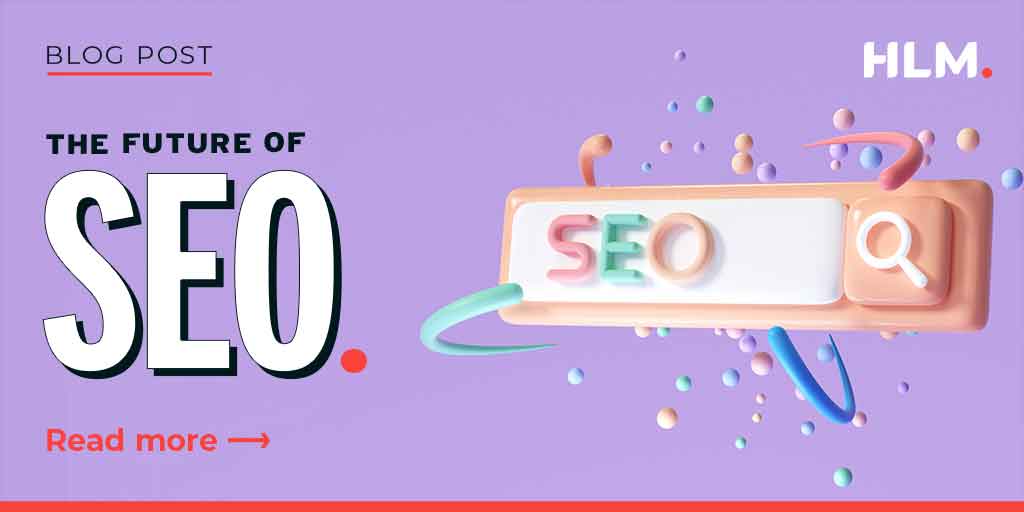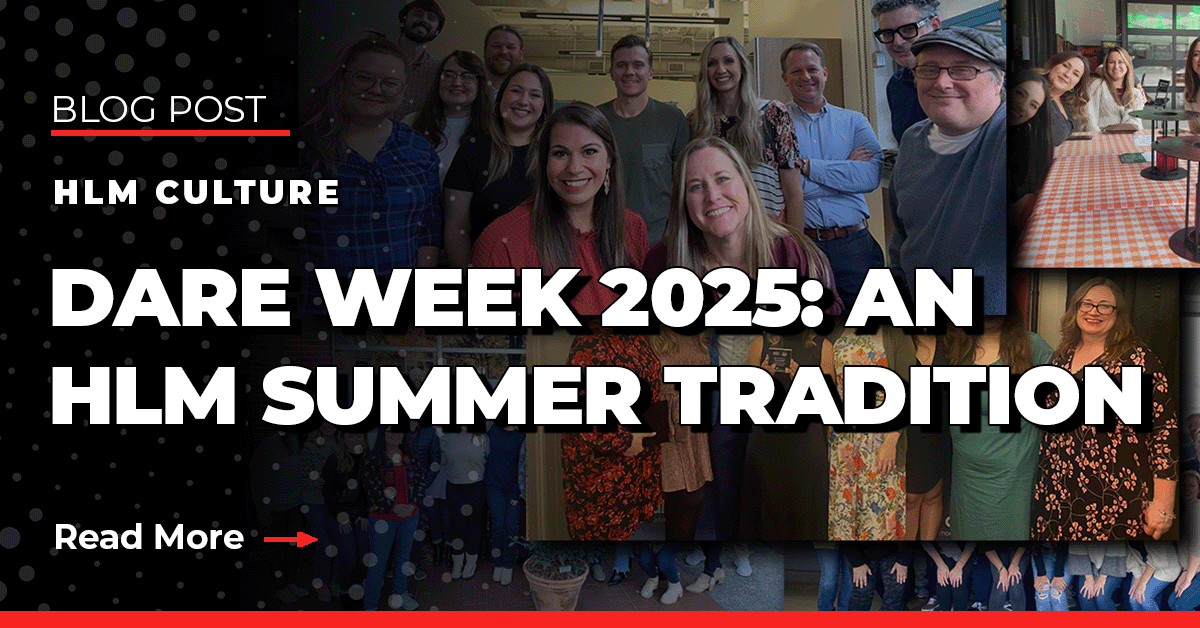![]() By Annie Wissner
Oct 17, 2023 3:06:35 PM
By Annie Wissner
Oct 17, 2023 3:06:35 PM

The landscape of SEO is constantly evolving, and in recent years, we've seen a significant shift away from the traditional keyword-centric approach. Search engines have become smarter, and user intent now plays a more central role in delivering results. In this blog post, we'll explore the world after keywords, discussing how SEO is changing, the importance of user intent, and strategies for optimizing your website now and in the future.
The Decline of Keyword Stuffing:
Historically, websites often used excessive keywords in their content, a practice known as keyword stuffing. Data shows that search engines have become more sophisticated in identifying and penalizing this practice. Instead, focus on natural and informative content that genuinely addresses user queries.
The rise of natural language processing (NLP) technologies has enabled search engines to better understand the context and meaning of words within content. This means that content creators can now focus on using natural language and a variety of related terms and phrases to make their content more contextually relevant. Rather than rigidly sticking to specific keywords, they can craft content that flows naturally and is easily understood by both users and search engines.
User Intent Matters More:
Search engines are now prioritizing results that match user intent otherwise known as search intent. Understanding what users want and crafting content that addresses those needs is essential. According to a study by Moz, over 70% of all search engine queries are driven by user intent. Tools like Google's BERT (Bidirectional Encoder Representations from Transformers) are a prime example of how search engines are becoming more context-aware. Not convinced? Take a look at Google's Search Quality Evaluator Guidelines—there's a whole section on user intent and how to identify different intent types.
So What is User Intent?
User intent, in the context of online search and digital marketing, refers to the specific goal or purpose a user has when entering a query into a search engine or when visiting a website. It's about understanding why someone is conducting a search or visiting a webpage, what information they’re seeking, and what action they intend to take. User intent is a fundamental concept in search engine optimization (SEO) and content marketing, as it helps marketers and website owners tailor their content and strategies to better meet the needs and expectations of their target audience.
There are generally four main types of user intent:
- Informational Intent: Users are seeking information, answers, or solutions to their questions. They may be looking for definitions, how-to guides, news, or general knowledge.
- Navigational Intent: Users are looking for a specific website or webpage. They typically enter a brand name or domain into the search bar, intending to directly access a particular website.
- Transactional Intent: Users have the intention of making a purchase or taking some other specific action. They may be searching for products, services, or resources to buy, download, or subscribe to.
- Commercial Investigation (Investigational) Intent: Users are in the research phase of making a decision. They're evaluating options, reading reviews, and comparing products or services before deciding on a purchase or action.
Search engines are now prioritizing results that match user intent. Understanding what users want and crafting content that addresses those needs is essential. According to a study by Moz, over 70% of all search engine queries are driven by user intent. Tools like Google's BERT (Bidirectional Encoder Representations from Transformers) are a prime example of how search engines are becoming more context-aware.
Understanding user intent is crucial for content creators and marketers because it allows them to create content that aligns with what users are looking for, thus increasing the chances of attracting the right audience and fulfilling their needs. It's not just about optimizing content for specific keywords but also ensuring that the content satisfies the underlying intent behind those keywords. This user-focused approach enhances the user experience and can lead to improved SEO rankings, higher engagement, and better conversion rates.
Voice Search and Natural Language Processing:
Voice search is on the rise, with virtual assistants like Siri, Alexa, and Google Assistant becoming increasingly popular. Data indicates that voice searches tend to be more conversational in nature. Optimizing your content for voice search, long-tail keywords, and natural language is a smart move.
Data indicates that voice searches tend to be more conversational in nature. According to ComScore, voice searches are expected to comprise 50% of all searches by 2025.
Semantic Search and Structured Data:
In the ever-evolving world of SEO, semantic search has become a game-changer. Search engines now employ semantic search to understand the meaning behind words and the context in which they’re used. Rather than merely matching keywords, these advanced algorithms aim to grasp the user's true intent. For website owners and content creators, this means an increased emphasis on creating content that provides not just surface-level information but a deeper understanding of topics.
One powerful tool to aid search engines in comprehending your content is structured data markup, often implemented using schema.org. Structured data markup enables websites to provide structured information about their content. This can result in rich results in search, such as featured snippets, which not only enhance visibility but also establish your content as a valuable resource in your niche. As semantic search continues to evolve, incorporating structured data into your SEO strategy is becoming increasingly vital. According to a study by Search Engine Land, pages with structured data rank higher and often achieve featured snippets.
Content Quality over Quantity:
The shift towards user intent and semantic search has placed a premium on content quality. Search engines consistently favor high-quality, engaging content over keyword-stuffed, shallow articles. Lengthier, in-depth articles that thoroughly explore relevant topics tend to perform exceptionally well in search results. Data consistently shows that high-quality, engaging content is favored by search engines. Longer, in-depth articles tend to perform well in search results. According to Backlinko, the average word count of content on the first page of Google search results is approximately 1,890 words.
Modern SEO isn’t just about producing a high volume of content, but ensuring that each piece provides real value to your audience. It's about addressing their concerns, answering their questions, and offering unique insights. Prioritizing quality over quantity not only improves your chances of ranking well but also enhances user engagement, trust, and overall conversion rates.
Mobile Optimization Remains Crucial:
Data reveals that mobile usage continues to grow. Google's mobile-first indexing means that your website's mobile version is now the primary consideration for ranking. Ensure your site is responsive, loads quickly, and offers an excellent user experience on mobile devices.
Data reveals that mobile usage continues to grow. According to Statista, in 2021, mobile devices accounted for approximately 56% of all web traffic. Google's mobile-first indexing means that your website's mobile version is now the primary consideration for ranking.
Site Speed and Core Web Vitals:
Website speed is a critical factor that directly impacts user experience and search engine rankings. Google's Core Web Vitals update has introduced metrics such as Largest Contentful Paint (LCP), First Input Delay (FID), and Cumulative Layout Shift (CLS) as ranking factors. These metrics reflect the real-world experience of users on your site, focusing on load times, interactivity, and visual stability. According to Google, sites that meet the Core Web Vitals standards are more likely to rank higher in search results.
Ensuring your website performs well on these metrics isn’t just about SEO; it's about providing a satisfactory user experience. Websites that load quickly and smoothly, with minimal disruption, are more likely to retain visitors, leading to higher engagement and better search engine rankings.
User Experience and Dwell Time:
User experience metrics, such as low bounce rates and long dwell times, indicate to search engines that your content is valuable to users. Optimize your site's navigation, design, and layout to enhance user engagement and satisfaction.
User experience metrics, such as low bounce rates and long dwell times, indicate to search engines that your content is valuable to users. According to a study by digital expert, Neil Patel, the average dwell time for pages ranking in the top 10 search results is around three minutes.
Backlinks and Trustworthiness:
While the focus is shifting away from keywords, data still shows that backlinks from reputable websites are valuable. These links establish trust and authority. Earning high-quality backlinks through valuable content and relationships with others in your industry remains a vital strategy.
While the focus is shifting away from keywords, data still shows that backlinks from reputable websites are valuable. According to Ahrefs, there is a strong correlation between the number of referring domains and a page's position in the search results. High-quality backlinks establish trust and authority.
What Lies Ahead for Backlinking?
The future of backlinks extends beyond traditional text-based content. Visual and video content will assume a more prominent role in linking strategies. Interactive infographics, engaging videos, and other multimedia elements will not only elevate the user experience but also draw in a wider array of organic backlinks from diverse sources.
Artificial Intelligence (AI) and Machine Learning:
Search engines are increasingly relying on AI and machine learning to improve search results. Algorithms like Google's RankBrain use AI to better understand user queries and deliver more relevant results. This data-driven approach enhances the user experience and, consequently, your SEO.
Search engines are increasingly relying on AI and machine learning to improve search results. Algorithms like Google's RankBrain use AI to better understand user queries and deliver more relevant results. This data-driven approach enhances the user experience and, consequently, your SEO. According to a report by WordStream, businesses that invest in AI for marketing can increase their ROI by up to 20%.
What's Next
The world of SEO is rapidly changing, and the days of keyword-centric optimization are behind us. Embracing these shifts, understanding the importance of user intent, and focusing on content quality, mobile optimization, and user experience are key to future SEO success. Keep a close eye on emerging technologies, such as AI, and adapt your strategy accordingly.
As you navigate this evolving landscape, remember that data-driven decisions, user-centric content, and a holistic approach to SEO are the cornerstones of your digital marketing success. SEO in the post-keyword era is all about providing real value to your audience, and that is a future worth embracing.
Unlock Your Online Potential Today! Explore Our SEO Services for Proven Results. Get Started Now!
Author: Annie Wissner
Contact Us NowRecent Posts
When you're done with this post, check out our other content below for more Digital Marketing expertise
Contact Us Today
Complete the form below and receive a call within minutes.
Need faster results? Call us now at (888) 717-4249





